US Airways 2008 Annual Report Download - page 9
Download and view the complete annual report
Please find page 9 of the 2008 US Airways annual report below. You can navigate through the pages in the report by either clicking on the pages listed below, or by using the keyword search tool below to find specific information within the annual report.-
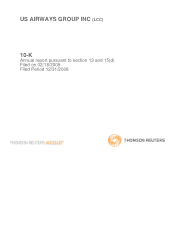 1
1 -
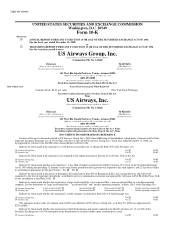 2
2 -
 3
3 -
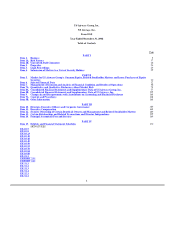 4
4 -
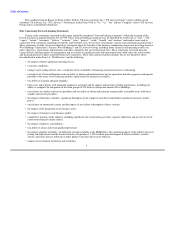 5
5 -
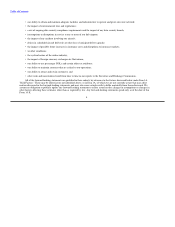 6
6 -
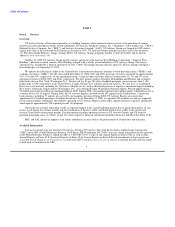 7
7 -
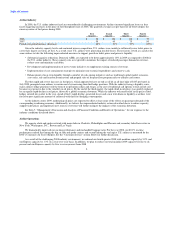 8
8 -
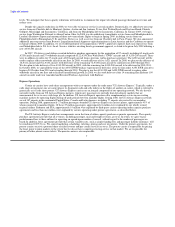 9
9 -
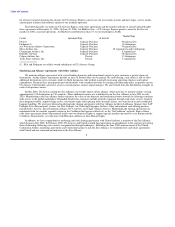 10
10 -
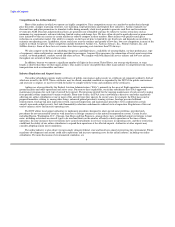 11
11 -
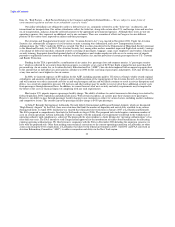 12
12 -
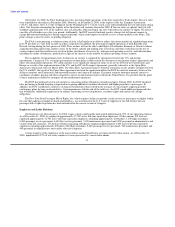 13
13 -
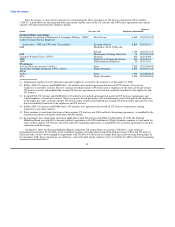 14
14 -
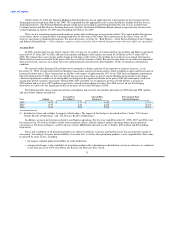 15
15 -
 16
16 -
 17
17 -
 18
18 -
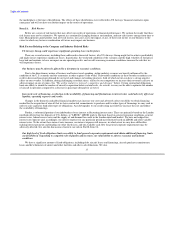 19
19 -
 20
20 -
 21
21 -
 22
22 -
 23
23 -
 24
24 -
 25
25 -
 26
26 -
 27
27 -
 28
28 -
 29
29 -
 30
30 -
 31
31 -
 32
32 -
 33
33 -
 34
34 -
 35
35 -
 36
36 -
 37
37 -
 38
38 -
 39
39 -
 40
40 -
 41
41 -
 42
42 -
 43
43 -
 44
44 -
 45
45 -
 46
46 -
 47
47 -
 48
48 -
 49
49 -
 50
50 -
 51
51 -
 52
52 -
 53
53 -
 54
54 -
 55
55 -
 56
56 -
 57
57 -
 58
58 -
 59
59 -
 60
60 -
 61
61 -
 62
62 -
 63
63 -
 64
64 -
 65
65 -
 66
66 -
 67
67 -
 68
68 -
 69
69 -
 70
70 -
 71
71 -
 72
72 -
 73
73 -
 74
74 -
 75
75 -
 76
76 -
 77
77 -
 78
78 -
 79
79 -
 80
80 -
 81
81 -
 82
82 -
 83
83 -
 84
84 -
 85
85 -
 86
86 -
 87
87 -
 88
88 -
 89
89 -
 90
90 -
 91
91 -
 92
92 -
 93
93 -
 94
94 -
 95
95 -
 96
96 -
 97
97 -
 98
98 -
 99
99 -
 100
100 -
 101
101 -
 102
102 -
 103
103 -
 104
104 -
 105
105 -
 106
106 -
 107
107 -
 108
108 -
 109
109 -
 110
110 -
 111
111 -
 112
112 -
 113
113 -
 114
114 -
 115
115 -
 116
116 -
 117
117 -
 118
118 -
 119
119 -
 120
120 -
 121
121 -
 122
122 -
 123
123 -
 124
124 -
 125
125 -
 126
126 -
 127
127 -
 128
128 -
 129
129 -
 130
130 -
 131
131 -
 132
132 -
 133
133 -
 134
134 -
 135
135 -
 136
136 -
 137
137 -
 138
138 -
 139
139 -
 140
140 -
 141
141 -
 142
142 -
 143
143 -
 144
144 -
 145
145 -
 146
146 -
 147
147 -
 148
148 -
 149
149 -
 150
150 -
 151
151 -
 152
152 -
 153
153 -
 154
154 -
 155
155 -
 156
156 -
 157
157 -
 158
158 -
 159
159 -
 160
160 -
 161
161 -
 162
162 -
 163
163 -
 164
164 -
 165
165 -
 166
166 -
 167
167 -
 168
168 -
 169
169 -
 170
170 -
 171
171 -
 172
172 -
 173
173 -
 174
174 -
 175
175 -
 176
176 -
 177
177 -
 178
178 -
 179
179 -
 180
180 -
 181
181 -
 182
182 -
 183
183 -
 184
184 -
 185
185 -
 186
186 -
 187
187 -
 188
188 -
 189
189 -
 190
190 -
 191
191 -
 192
192 -
 193
193 -
 194
194 -
 195
195 -
 196
196 -
 197
197 -
 198
198 -
 199
199 -
 200
200 -
 201
201 -
 202
202 -
 203
203 -
 204
204 -
 205
205 -
 206
206 -
 207
207 -
 208
208 -
 209
209 -
 210
210 -
 211
211 -
 212
212 -
 213
213 -
 214
214 -
 215
215 -
 216
216 -
 217
217 -
 218
218 -
 219
219 -
 220
220 -
 221
221 -
 222
222 -
 223
223 -
 224
224 -
 225
225 -
 226
226 -
 227
227 -
 228
228 -
 229
229 -
 230
230 -
 231
231 -
 232
232 -
 233
233 -
 234
234 -
 235
235 -
 236
236 -
 237
237 -
 238
238 -
 239
239 -
 240
240 -
 241
241 -
 242
242 -
 243
243 -
 244
244 -
 245
245 -
 246
246 -
 247
247 -
 248
248 -
 249
249 -
 250
250 -
 251
251 -
 252
252 -
 253
253 -
 254
254 -
 255
255 -
 256
256 -
 257
257 -
 258
258 -
 259
259 -
 260
260 -
 261
261 -
 262
262 -
 263
263 -
 264
264 -
 265
265 -
 266
266 -
 267
267 -
 268
268 -
 269
269 -
 270
270 -
 271
271 -
 272
272 -
 273
273 -
 274
274 -
 275
275 -
 276
276 -
 277
277 -
 278
278 -
 279
279 -
 280
280 -
 281
281 -
 282
282 -
 283
283 -
 284
284 -
 285
285 -
 286
286 -
 287
287 -
 288
288 -
 289
289 -
 290
290 -
 291
291 -
 292
292 -
 293
293 -
 294
294 -
 295
295 -
 296
296 -
 297
297 -
 298
298 -
 299
299 -
 300
300 -
 301
301 -
 302
302 -
 303
303 -
 304
304 -
 305
305 -
 306
306 -
 307
307 -
 308
308 -
 309
309 -
 310
310 -
 311
311 -
 312
312 -
 313
313 -
 314
314 -
 315
315 -
 316
316 -
 317
317 -
 318
318 -
 319
319 -
 320
320 -
 321
321 -
 322
322 -
 323
323 -
 324
324 -
 325
325 -
 326
326 -
 327
327 -
 328
328 -
 329
329 -
 330
330 -
 331
331 -
 332
332 -
 333
333 -
 334
334 -
 335
335 -
 336
336 -
 337
337 -
 338
338 -
 339
339 -
 340
340 -
 341
341 -
 342
342 -
 343
343 -
 344
344 -
 345
345 -
 346
346 -
 347
347 -
 348
348 -
 349
349 -
 350
350 -
 351
351 -
 352
352 -
 353
353 -
 354
354 -
 355
355 -
 356
356 -
 357
357 -
 358
358 -
 359
359 -
 360
360 -
 361
361 -
 362
362 -
 363
363 -
 364
364 -
 365
365 -
 366
366 -
 367
367 -
 368
368 -
 369
369 -
 370
370 -
 371
371 -
 372
372 -
 373
373 -
 374
374 -
 375
375 -
 376
376 -
 377
377 -
 378
378 -
 379
379 -
 380
380 -
 381
381 -
 382
382 -
 383
383 -
 384
384 -
 385
385 -
 386
386 -
 387
387 -
 388
388 -
 389
389 -
 390
390 -
 391
391 -
 392
392 -
 393
393 -
 394
394 -
 395
395 -
 396
396 -
 397
397 -
 398
398 -
 399
399 -
 400
400 -
 401
401
 |
 |

Table of Contents
levels. We anticipate that these capacity reductions will enable us to minimize the impact of reduced passenger demand on revenue and
reduce costs.
Despite the capacity reductions in 2008, we were able to increase service in certain markets. Domestically, we added new non-stop
service from our Charlotte hub to Montreal, Quebec; Austin and San Antonio, Texas; Fort Walton Beach and Daytona Beach, Florida;
Gulfport, Mississippi and Sacramento, California, and from our Philadelphia hub to Sacramento, California. In January 2009, we began
service from Washington National to Akron/Canton, Ohio. In 2008, we also added new transatlantic service from our Philadelphia hub to
London's Heathrow Airport and announced three new transatlantic flights to begin in Spring 2009, including service from our
Philadelphia hub to Birmingham, U.K. and Oslo, Norway as well as service from our Charlotte hub to Paris, France. We also announced
additional non-stop service from Boston's Logan International Airport to eight destinations in Latin America and the Caribbean to operate
in January-March 2009. In addition, we received Department of Transportation ("DOT") approval to operate daily non-stop service from
our Philadelphia hub to Tel Aviv, Israel. Service, which is awaiting Israeli government approval, is slated to begin in July 2009 utilizing a
new A330-200 aircraft.
In 2007, US Airways and Airbus executed definitive purchase agreements for the acquisition of 97 aircraft, including 60 single-aisle
A320 family aircraft and 37 widebody aircraft comprised of 22 A350 Xtra Wide Body ("XWB") aircraft and 15 A330-200 aircraft. These
were in addition to orders for 37 single-aisle A320 family aircraft from a previous Airbus purchase agreement. The A320 aircraft will be
used to replace older narrowbody aircraft in our fleet. In 2008, we took delivery of five A321 aircraft. In 2009, we plan to take delivery of
18 A321 aircraft and two A320 aircraft, with deliveries of the remaining 72 A320 family aircraft to continue from 2010 through 2012.
We also plan to take delivery of five A330-200 aircraft in 2009, with the remaining ten A330-200 aircraft to be delivered in 2010-2011.
In October 2008, we amended the terms of the A350 XWB Purchase Agreement for deliveries of the 22 firm order A350 XWB aircraft to
begin in 2015 rather than 2014 and extending through 2018. We plan to use the A330-200 and A350 XWB aircraft to replace older
widebody aircraft in our fleet and to facilitate international growth. In 2008, we also took delivery of the 14 remaining firm Embraer 190
aircraft on order under our Amended and Restated Purchase Agreement with Embraer.
Express Operations
Certain air carriers have code share arrangements with us to operate under the trade name "US Airways Express." Typically, under a
code share arrangement, one air carrier places its designator code and sells tickets on the flights of another air carrier, which is referred to
generically as its code share partner. US Airways Express carriers are an integral component of our operating network. We rely heavily
on feeder traffic from our US Airways Express partners, which carry passengers to our hubs from low-density markets that are
uneconomical for us to serve with large jets. In addition, US Airways Express operators offer complementary service in our existing
mainline markets by operating flights during off-peak periods between mainline flights. During 2008, the US Airways Express network
served 187 airports in the continental United States, Canada and Latin America, including 77 airports also served by our mainline
operation. During 2008, approximately 27 million passengers boarded US Airways Express air carriers' planes, approximately 43% of
whom connected to mainline flights. Of these 27 million passengers, approximately 8 million were enplaned by our wholly owned
regional airlines Piedmont and PSA, approximately 19 million were enplaned by third-party carriers operating under capacity purchase
agreements and less than one million were enplaned by carriers operating under prorate agreements, as described below.
The US Airways Express code share arrangements are in the form of either capacity purchase or prorate agreements. The capacity
purchase agreements provide that all revenues, including passenger, mail and freight revenues, go to us. In return, we agree to pay
predetermined fees to these airlines for operating an agreed-upon number of aircraft, without regard to the number of passengers on
board. In addition, these agreements provide that certain variable costs, such as airport landing fees and passenger liability insurance, will
be reimbursed 100% by us. We control marketing, scheduling, ticketing, pricing and seat inventories. Under the prorate agreements, the
prorate carriers receive a prorated share of ticket revenue and pay certain service fees to us. The prorate carrier is responsible for pricing
the local, point to point markets to the extent that we do not have competing existing service in that market. We are responsible for
pricing all other prorate carrier tickets. The prorate carrier is also responsible
7
